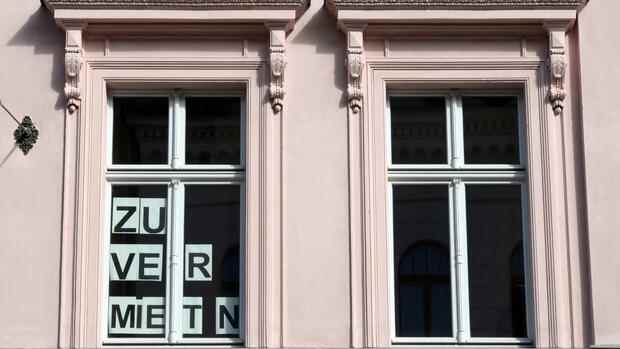Frankfurt A limit has long been exceeded for the tenants’ association. “The rent burden in German cities is too high,” complained tenants’ association President Lukas Siebenkotten a few days ago.
A new study, however, now suggests that the market is calming down – at least for the time being. In view of the continuing rise in purchase prices, it is an alarm signal for real estate investors – and hopeful news for tenants.
As can be seen from figures in the rental compass published on Monday by the real estate portal Immowelt, asking rents in the third quarter of this year have remained stable in most cities compared to the previous quarter – and have fallen slightly in some metropolises.
Has the peak of rent increases in Germany been gradually reached? After in some cases enormous rent increases in the past few years, at least a limit seems to have actually been reached in some cities. Only in five of the 14 major cities examined did asking rents rise further. For comparison: In the previous year there were still eight cities, as the study shows.
Top jobs of the day
Find the best jobs now and
be notified by email.
In the current situation, “even slight price corrections can now be observed,” says Jan-Carl Mehles, Head of Market Research at Immowelt. For the analysis, the offered square meter prices for existing apartments (80 square meters, 3 rooms, 2nd floor) in the third quarter of 2021 were compared with the previous quarter.
Munich, Frankfurt, Stuttgart and Hamburg no longer show any increases
According to the study, prices have recently stagnated in six large cities, and have even fallen slightly in three other cities. The cities with stable or falling rents included Munich, Frankfurt, Stuttgart and Hamburg, the four most expensive areas in Germany. “The markets seem to be calming down, especially in cities where rents have only been heading up steeply for years,” the study’s authors analyze.
In Germany’s most expensive city, Munich, rents stagnated for the second quarter in a row, according to Immowelt: a square meter is currently 16.50 euros for an existing apartment. In Frankfurt, the second most expensive city in Germany, asking rents fell by one percent to 11.60 euros. In Stuttgart, too, asking prices fell by one percent for the fifth quarter in a row. In high-priced Hamburg, prices have recently stagnated at 10.89 euros per square meter.
Berlin stands out
In the capital Berlin, however, rents continue to rise. The asking rents climbed in the third quarter by two percent to a square meter price in the portfolio of 9.39 euros. The low at the beginning of the year was 9.06 euros. At the end of September, in a referendum organized by the “Deutsche Wohnen & Co expropriating” initiative, Berliners voted in favor of expropriating housing groups.
In addition to Berlin, the two metropolises on the Rhine, Cologne and Düsseldorf, are still showing significant price increases. According to the study, asking rents in Cologne also rose by two percent to EUR 10.74 per square meter. For Düsseldorf, the experts quoted an average price per square meter of 10.66 euros in the portfolio after an increase that was just as high in percentage terms.
On the other hand, it is much cheaper to live in large cities in Saxony and in the Ruhr area, where there have been hardly any price changes. In Leipzig, prices increased by one percent to currently 6.57 euros per square meter, in Dresden the price stagnated at 6.80 euros. In Dortmund the prices even fell by one percent to 6.64 euros, while the price remained at 7.60 euros per square meter.
The Ruhr area is one of the regions with the least burden for tenants. However, there, too, the regional differences are sometimes very large.
(Photo: imago images / Jochen Tack)
The trend that rents in the most expensive cities are stabilizing or only increasing slightly is thus picking up speed this year. Landlords can still charge significantly more for new buildings. However, both the equipment and the energetic state of new apartments are usually better, which is noticeable in lower ancillary costs, it is said.
How big the differences in the cold rents are, however, varies greatly from city to city. The discrepancy is greatest in Berlin. According to calculations by Immowelt, the asking rents in the new building averaged EUR 12.89 per square meter in the third quarter. An 80-square-meter newly built apartment therefore costs 1031 euros in rent – which is 280 euros more than the existing one.
The authors of the study attribute the strong spread in the capital to the rent cap in Berlin that was collected in the spring. In contrast to existing apartments, this had no price limit for new buildings.
More: “Unsustainable condition”: German Tenants’ Association calls for rents to be stopped
